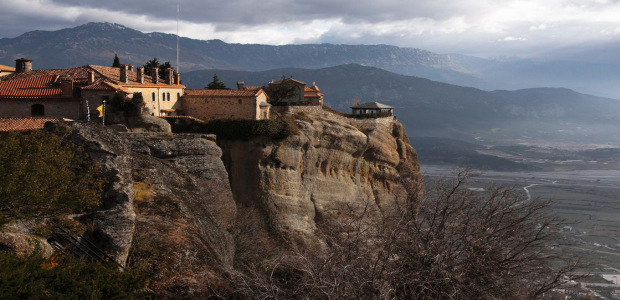For more than a thousand years tall spines of sheer rock, fixed in the shadow of the Pindhos Mountains in Greece, have provided sanctuary for monks seeking peace and solitude to contemplate the will of God. On the flank of the Pindhos Mountains, at the western edge of the plain of Thessaly in the heart of northern Greece, 24 gigantic perpendicular rocks rise from the ground. Etched by wind and rain into many curious shapes, these monoliths echo to the chants and prayers of a religious brotherhood, for since the ninth century, an ascetic community of monks has chosen to live perched precariously on these ancient pinnacles.
Meteora has been called ‘the rocky forest of Greece’. Vertical grooves in the mighty spires of dark grey stone that form its pinnacles have been scoured out by rainwater trickling down the face of the cliffs. The horizontal lines are much older and were formed by the lapping of waves against the rocks when the plain of Thessaly lay under the ocean.
Earth movements and erosion created the huge monoliths at Meteora. Some of the pinnacles, which average 1000ft (300m) in height, are needle-like, others resemble giant tusks, and still more have been described as vast grey stalagmites. A Greek word, Meteora means literally ‘in the heaven above’, an apt description of the monastery of the Holy Trinity, which was built in 1458.
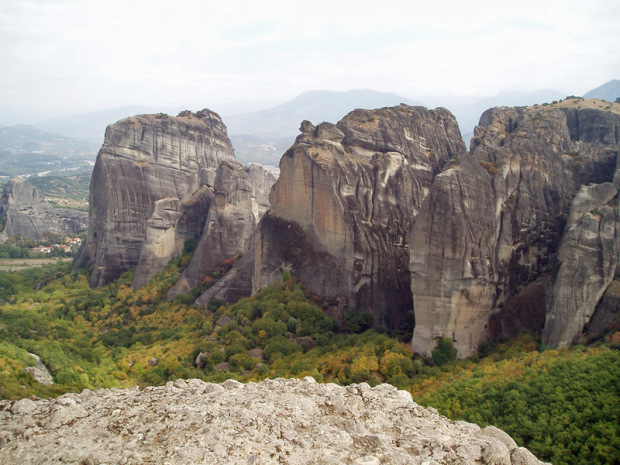
The rocks of Meteora are composed of a mixture of sandstone and conglomerate (waterworn fragments of rock bound together by a natural cement). They were formed about 60 million years ago as the rocky bed of a sea that covered what is now Thessaly. A series of violent earth movements in the area then thrust the seabed upwards, forming a high plateau and causing numerous fault lines and fissures to develop in the thick layer of sandstone. Subsequent weathering of the fractured sandstone by water, wind and extremes of temperature left behind the huge, sheer columns of rock, marked by horizontal seams which geologists maintain were made by the waters of a prehistoric sea.
The Greek historian Herodotus recorded in the fifth century BC that local people believed the plain of Thessaly had once been flooded by sea water and encircled by rocky shores. If this is accurate, there was probably an inundation at the end of the last Ice Age, around 8000 BC. However, Herodotus failed to note the rocky pinnacles of Meteora, and they are not recorded in the writings of any other ancient Greek authors. This rather surprising omission has been taken as evidence in some quarters that the pinnacles did not exist 2000 years ago – a theory that is dismissed by modern geologists.
The first people to inhabit Meteora were hermits, who sheltered from the elements in hollows in the rock pillars, several of which tower 1800ft (550m) above the plain. This great height, combined with the sheerness of the cliff walls, deterred all but the most determined visitors from interrupting their meditations. Initially the hermits led a life of solitude, meeting only on Sundays and special feast days to worship and pray in a chapel built at the foot of the rock known as Dhoupiani. By the end of the 12th century, a loosely organized ascetic community had evolved, whose members still respected the ideals of solitude.
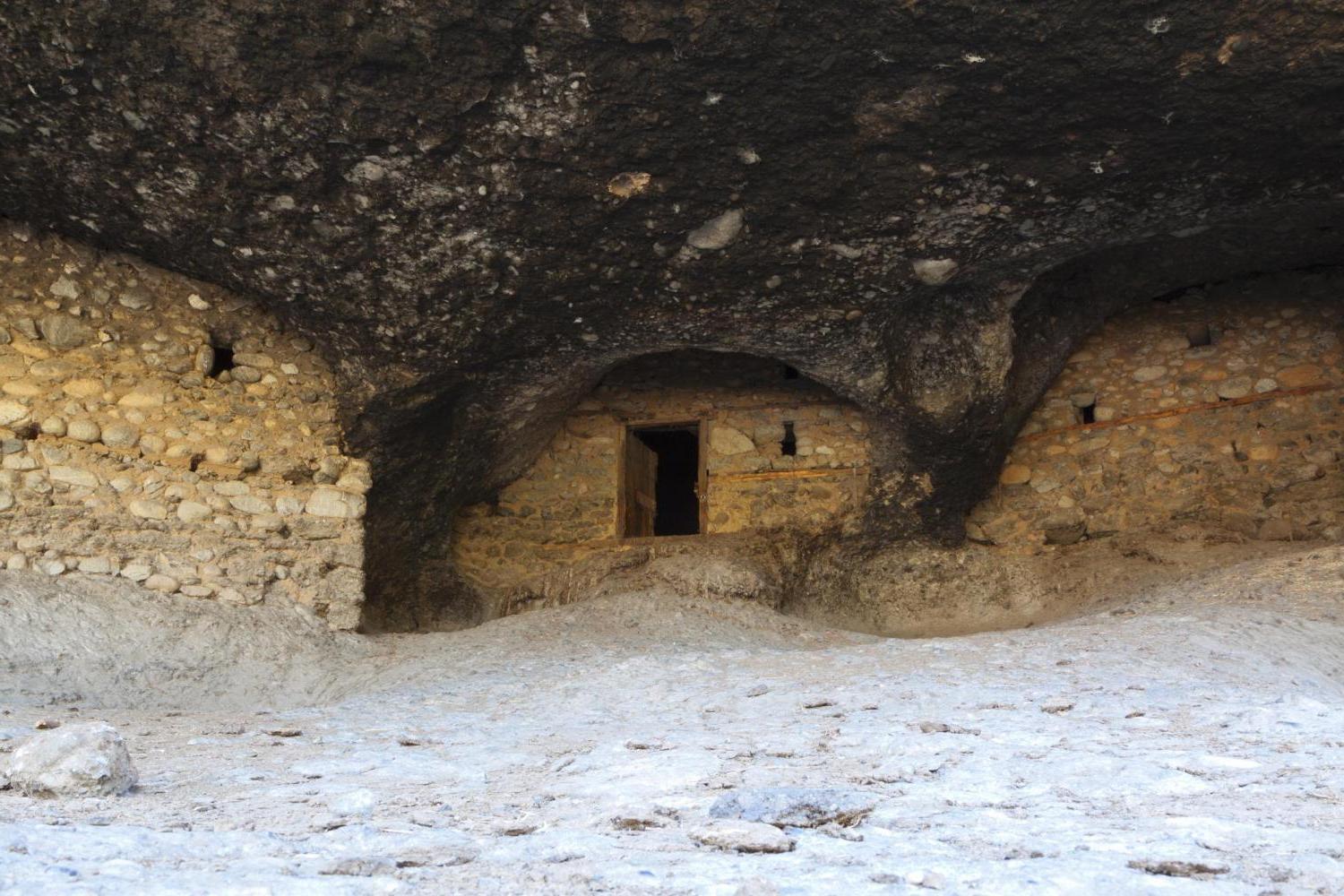
By the 14th century, the Byzantine Empire’s 800-year supremacy over northern Greece was being increasingly threatened as Serbian kings and Turkish raiders vied for control of the fertile plain of Thessaly. Peaceful monastic communities were particularly vulnerable, and in 1344 Athanasios Koinovitis, from the community on Mount Athos, led a group of followers to Meteora. Between 1356 and 1372 he founded the Great Meteoron monastery on the pinnacle of Broad Rock, a place ideally suited to the monks’ needs, for they were safe from political upheaval and had complete control over access to the monastery. Visitors could reach it only by climbing a long ladder, which was drawn up whenever the monks felt threatened.
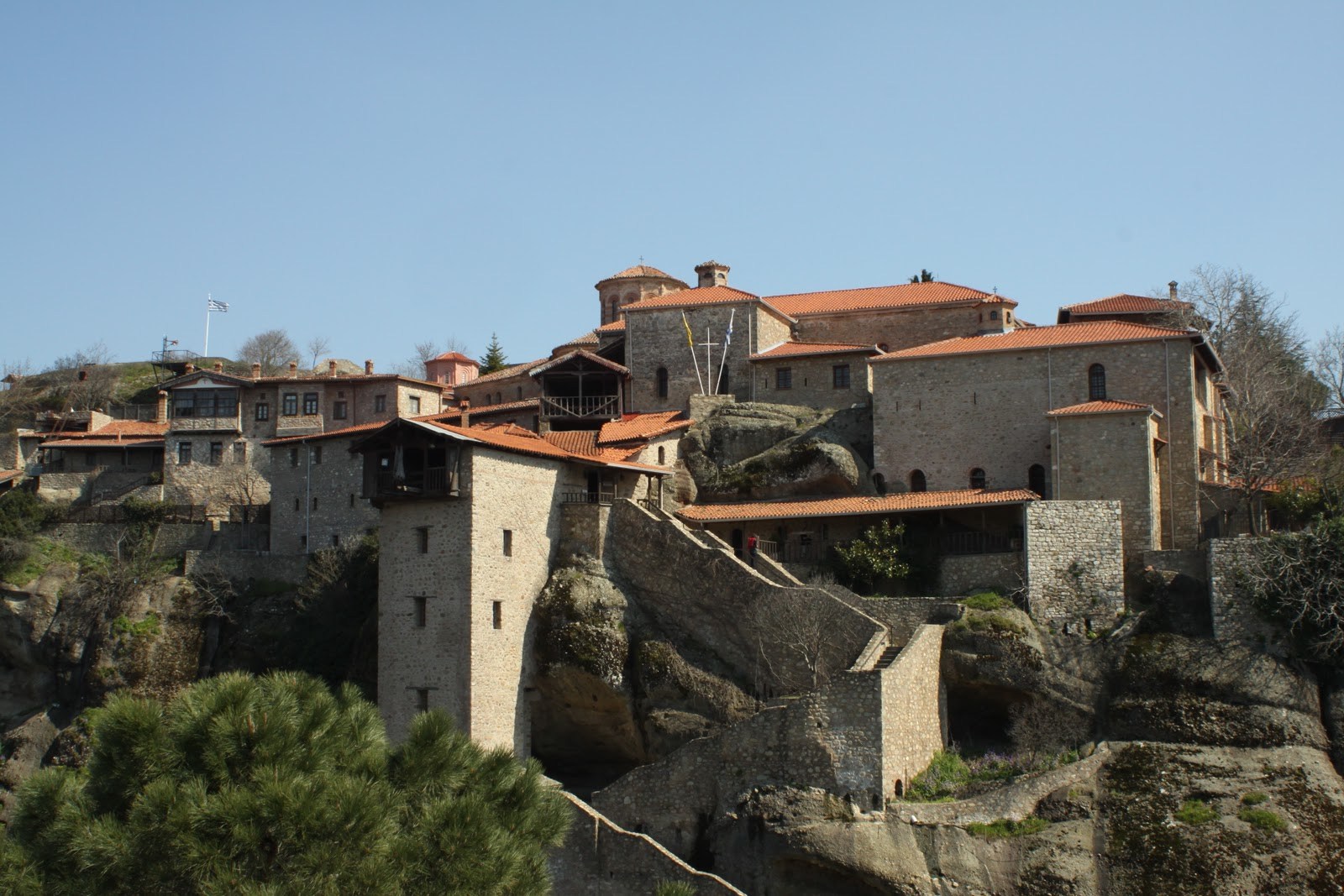
In the 15th and 16th centuries, the few simple dwellings became inadequate for the numbers of men seeking refuge at Meteora and larger, more sophisticated buildings were constructed. The ladder, too, was replaced – by a nerve-racking net-and-rope device operated by a windlass from a gantry overhanging the rock. A Russian religious scholar described his trip in the net in 1896. It was, he stated, ‘an agonizing lift, the rope was going here and there all the time, dragging me along until at last it reached the top’. But even then his terrifying adventure was not over because “….as they pulled me towards the wooden platform, they overturned me over the abyss. Horrified, I closed my eyes and nearly lost consciousness.” Today, steps hewn out of the rock provide a slightly less precarious access to the summit.
In 1517, the monks Nectarios and Theophanes built the monastery of Varlaam, named after a 14th-century hermit who had chosen this place as his retreat. They established one of the most austere religious orders at Meteora; among its principal practices wre long, nocturnal prayer sessions and ritual flagellation. The monastery was also reputed to house two holy relics – the finger of St John and the shoulder blade of St Andrew.
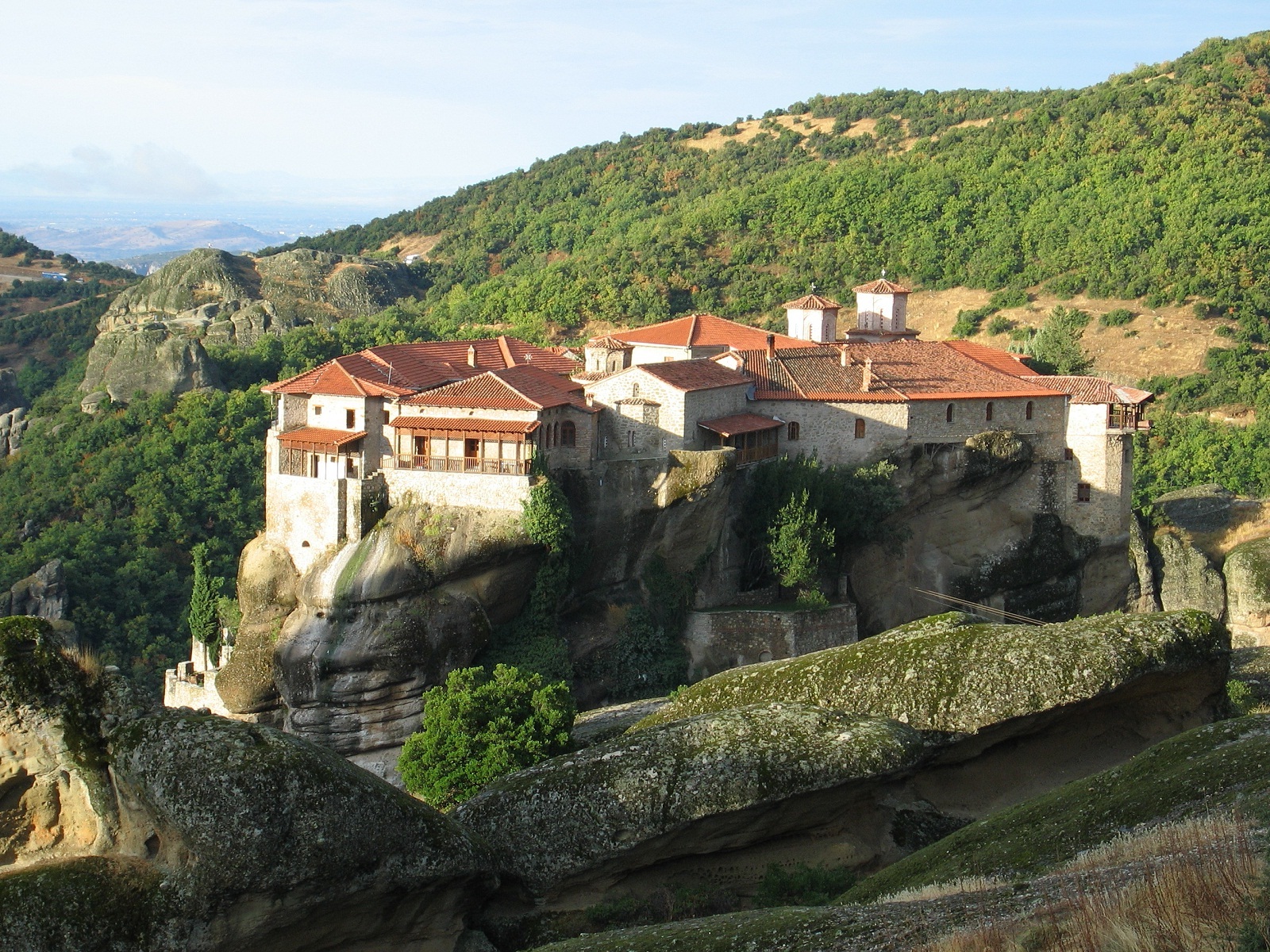
The stark interior of the wooden and stone living quarters at the monastery of Varlaam reflects the humble way of life led by the monks who dwelt there. By contrast, the monastery’s two chapels – the Chapel of All Saints and the Chapel of the Three Hierarchs – are decorated with well-preserved, brightly coloured frescoes and finely detailed icons. The monastery of Varlaam was damaged in World War II and the subsequent civil war in Greece. Like the other Meteora monasteries, it has been rebuilt and is now a major tourist attraction.
Although the designs of the monastery is simple, the chapels of All Saints and the Three Hierarchs are adorned with splendid frescoes. Those in the Chapel of All Saints, painted in 1548 by Franco Catellano, depict scenes from the lives of Jesus Christ and the Virgin Mary. Together with equally beautiful works of art painted on the walls of the monastery of St Nicholas by Theophanes the Cretan in 1527, these frescoes provide a powerful insight into the style and techniques of artists of the Byzantine Empire.

In spite of the restricted space, between the 13th and 16th centuries 24 different monasteries were founded at Meteora, each comprising one or two houses in which were located the monks’ cells, a library. Today, only six monasteries are still in use, tended by a few monks and nuns. Varlaam, Great Meteoron, St Nicholas and Holy Trinity house monks, while St Stephen and Roussanou are home to communities of nuns.
The eerie fascination of Meteora’s geology and the spiritual pull which the place exerts are largely responsible for its current decline as a religious centre. As Meteora increasingly becomes a museum piece which attracts thousands of tourists each year, aspiring young monks and nuns are unwilling to join the monasteries, while older devotees flee from them, to seek solitude elsewhere.
-end-


























